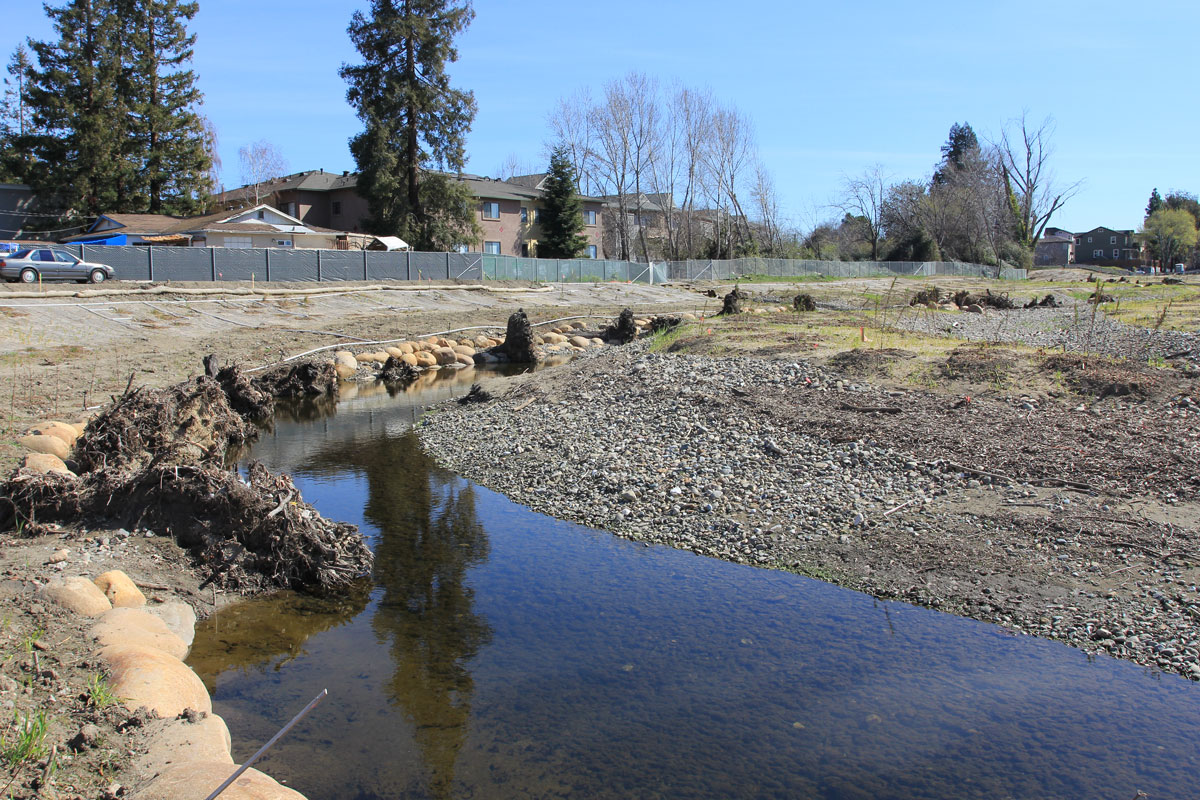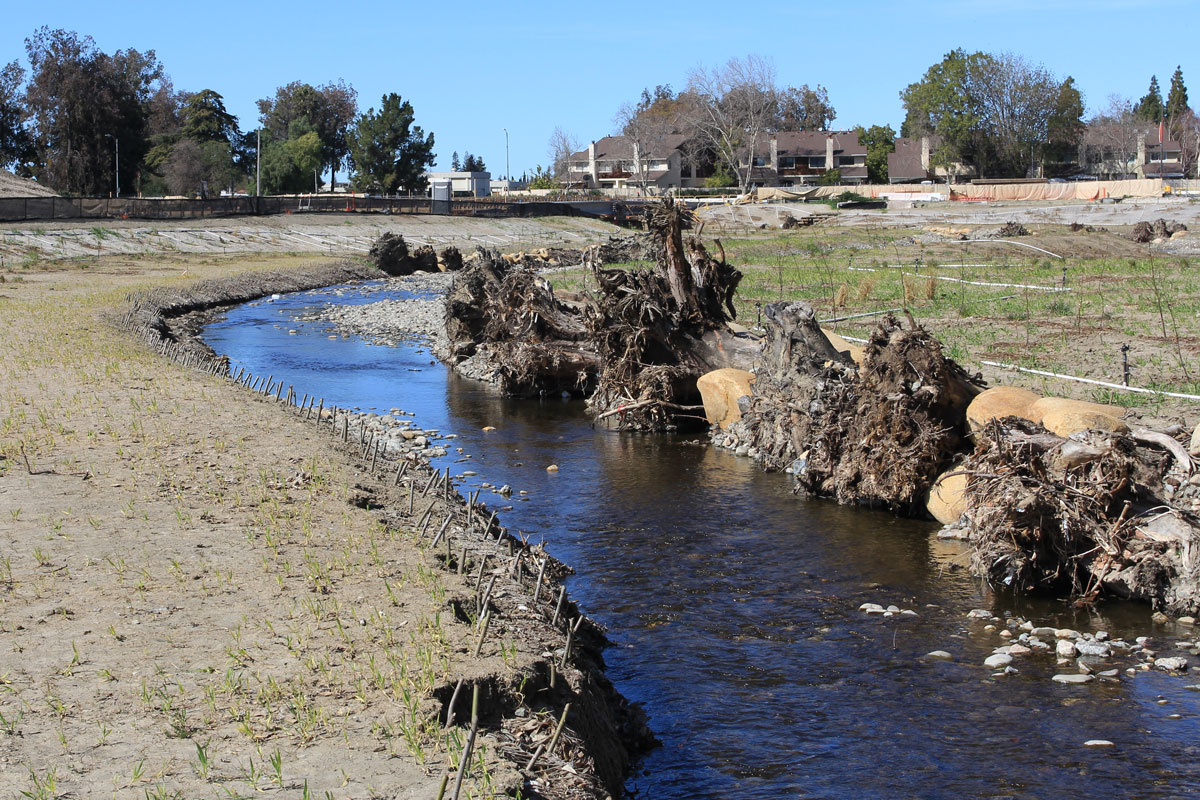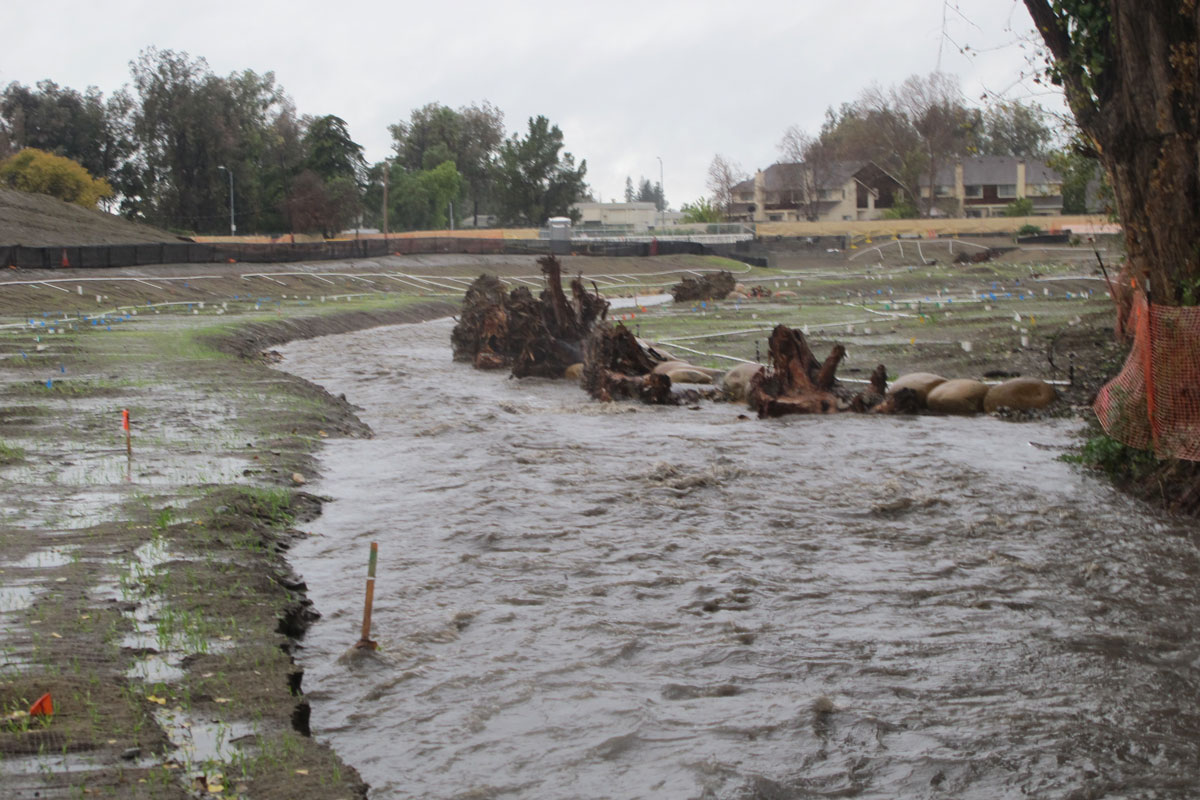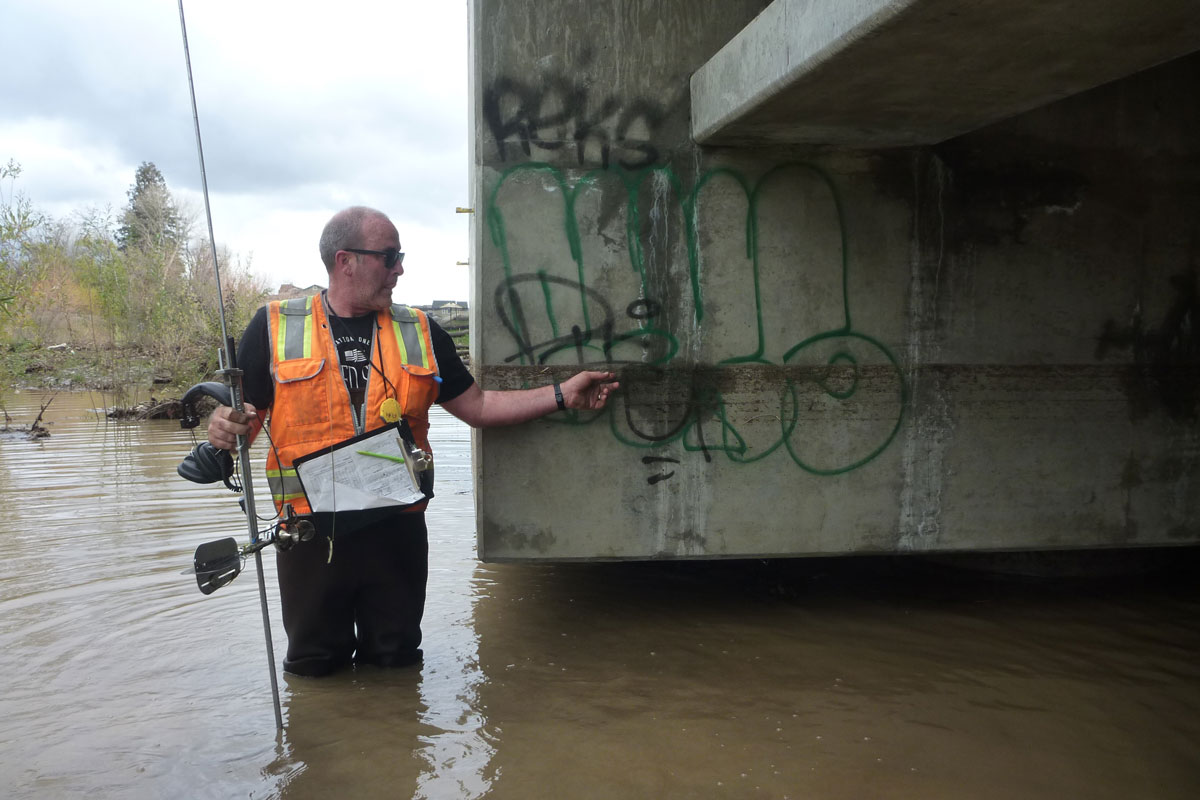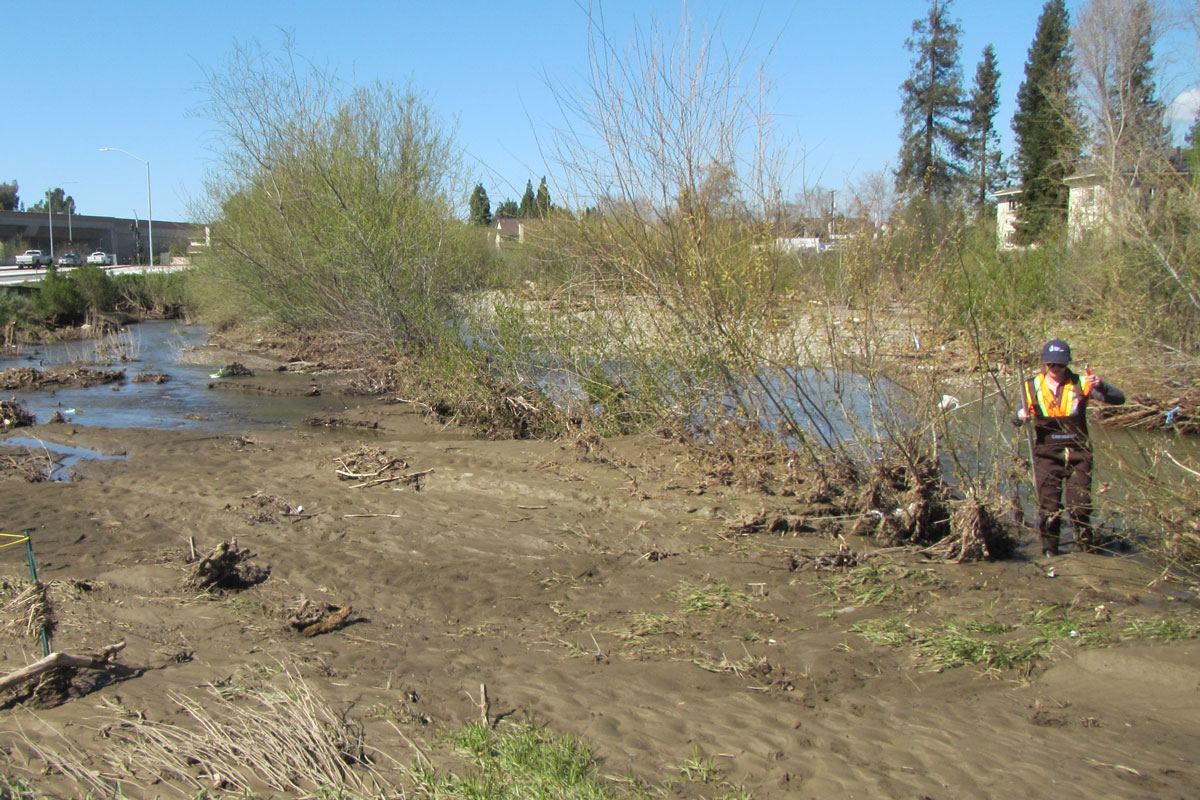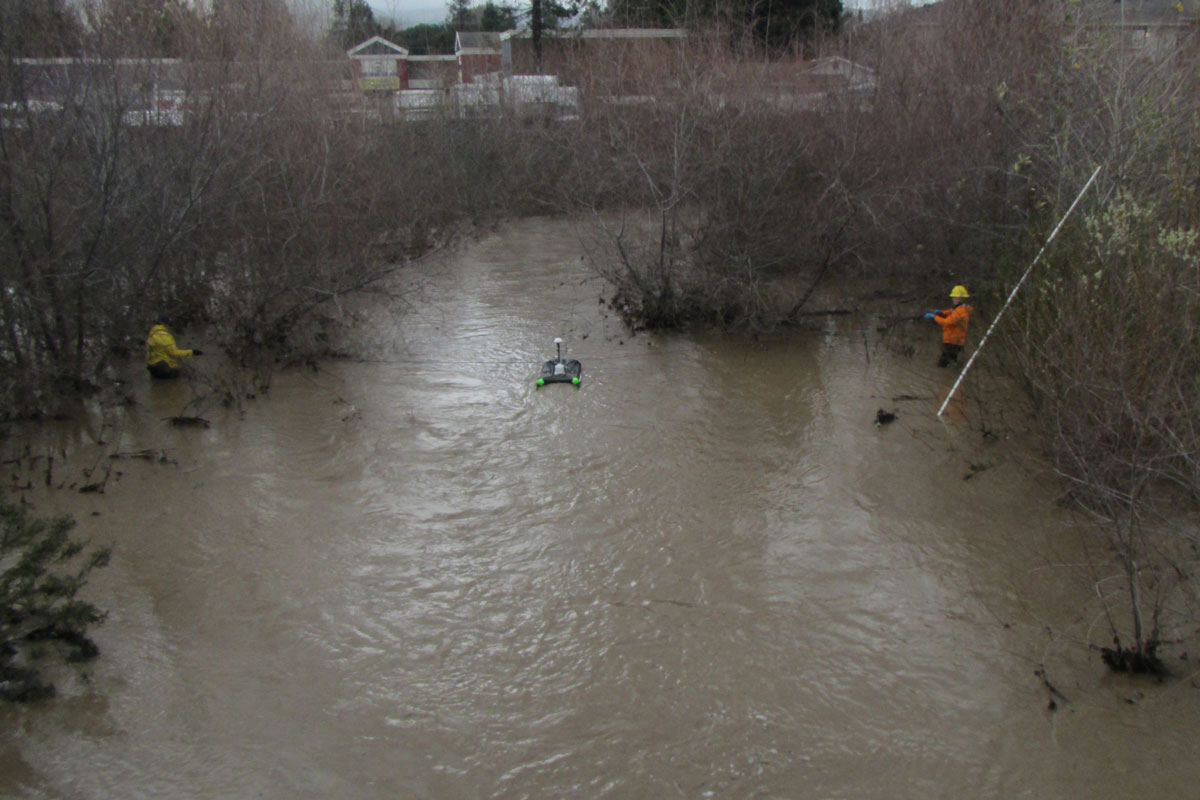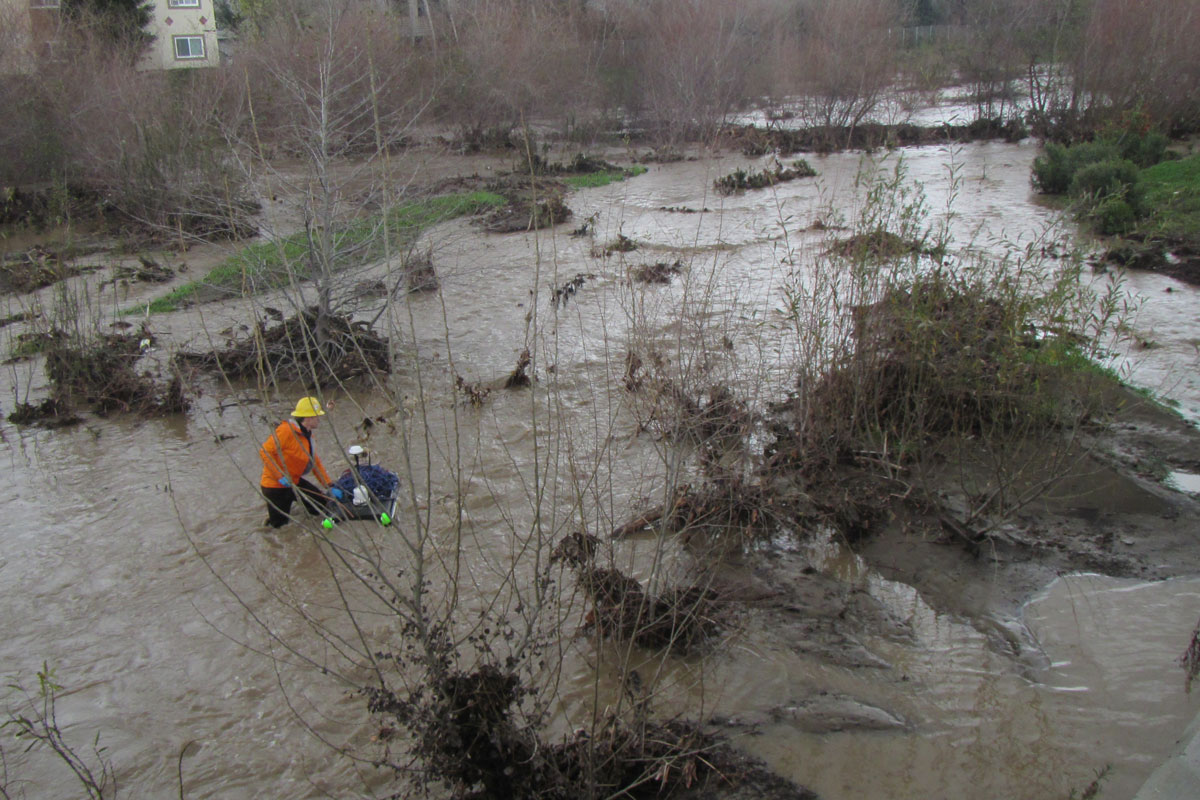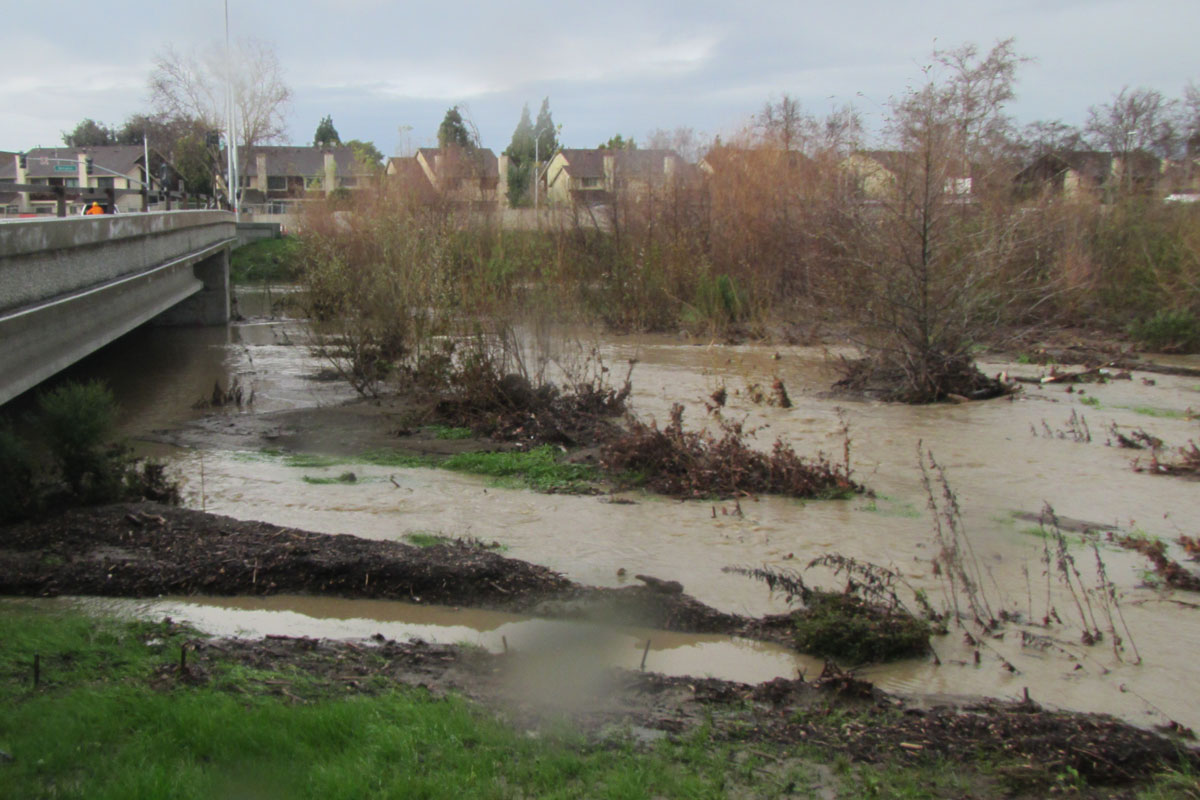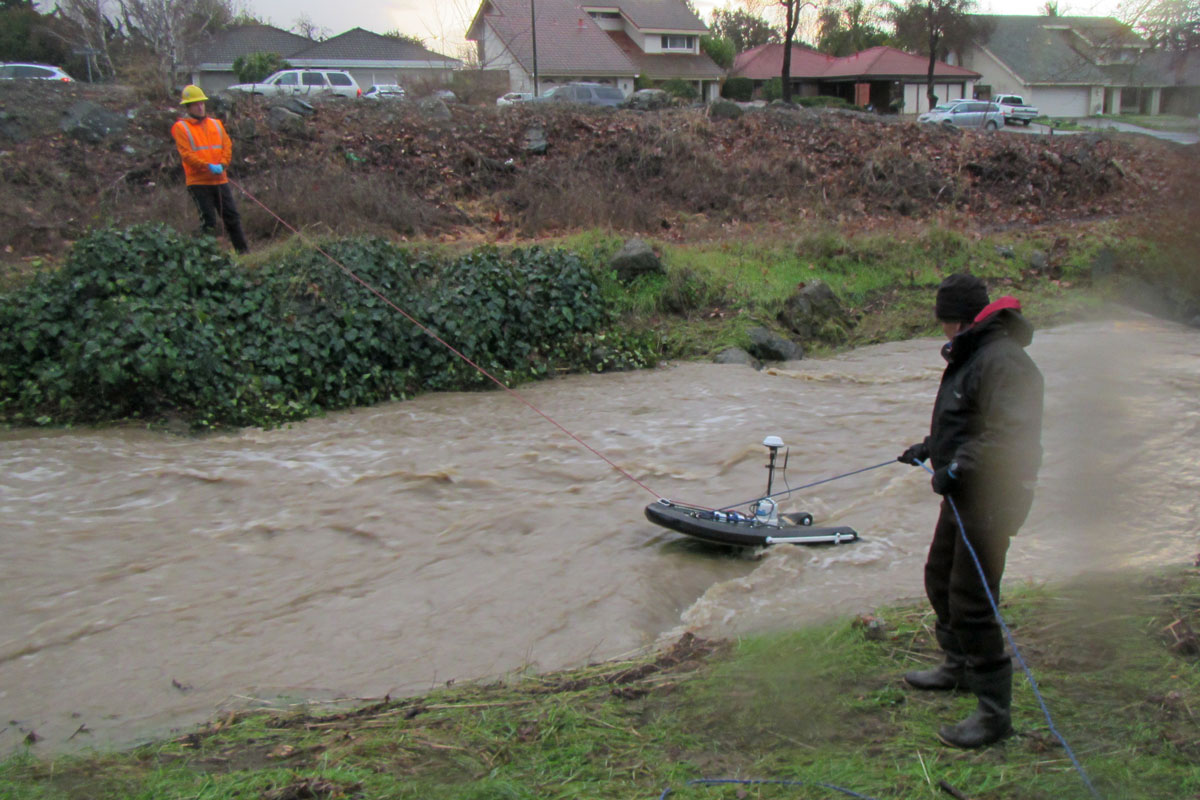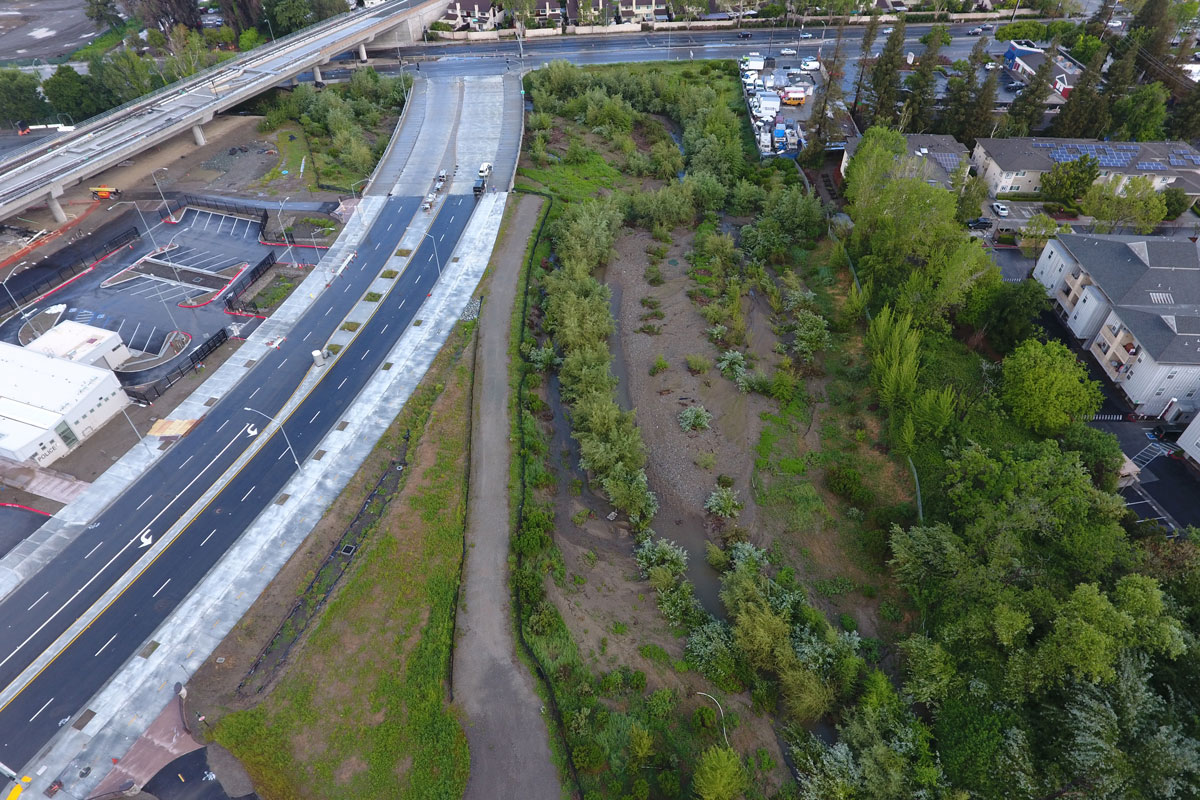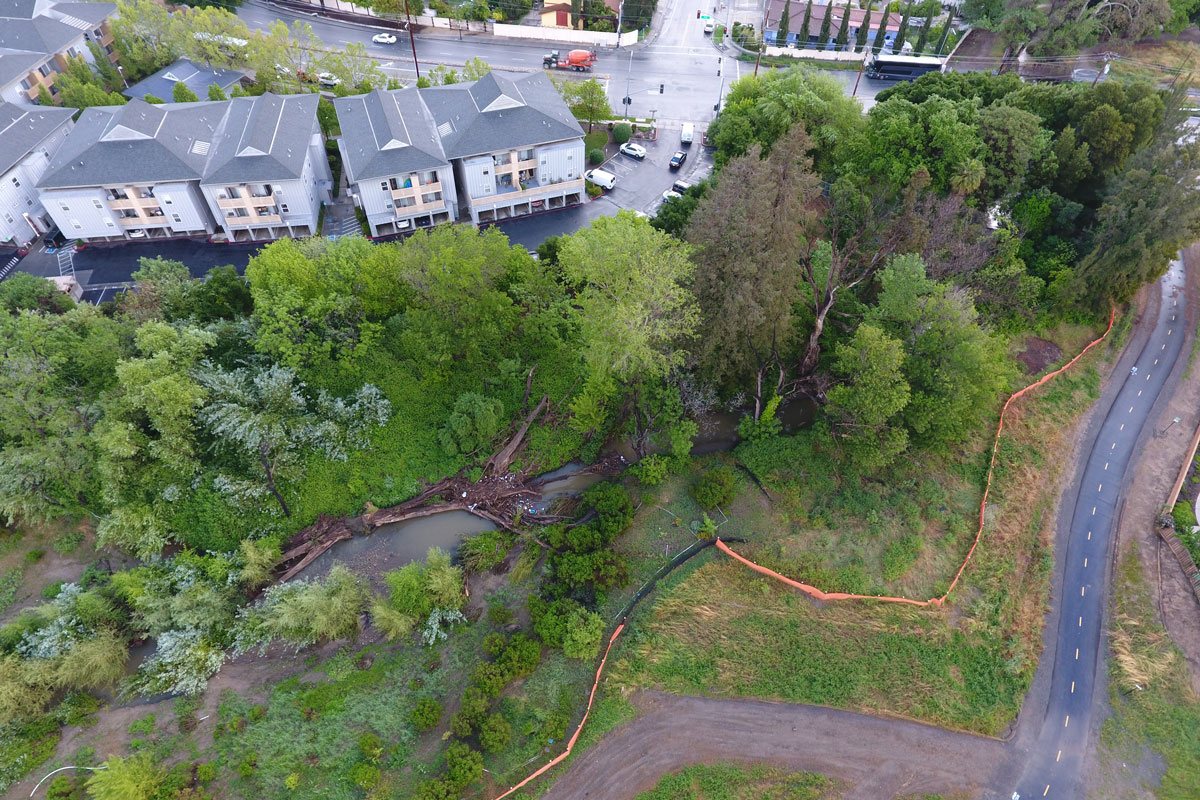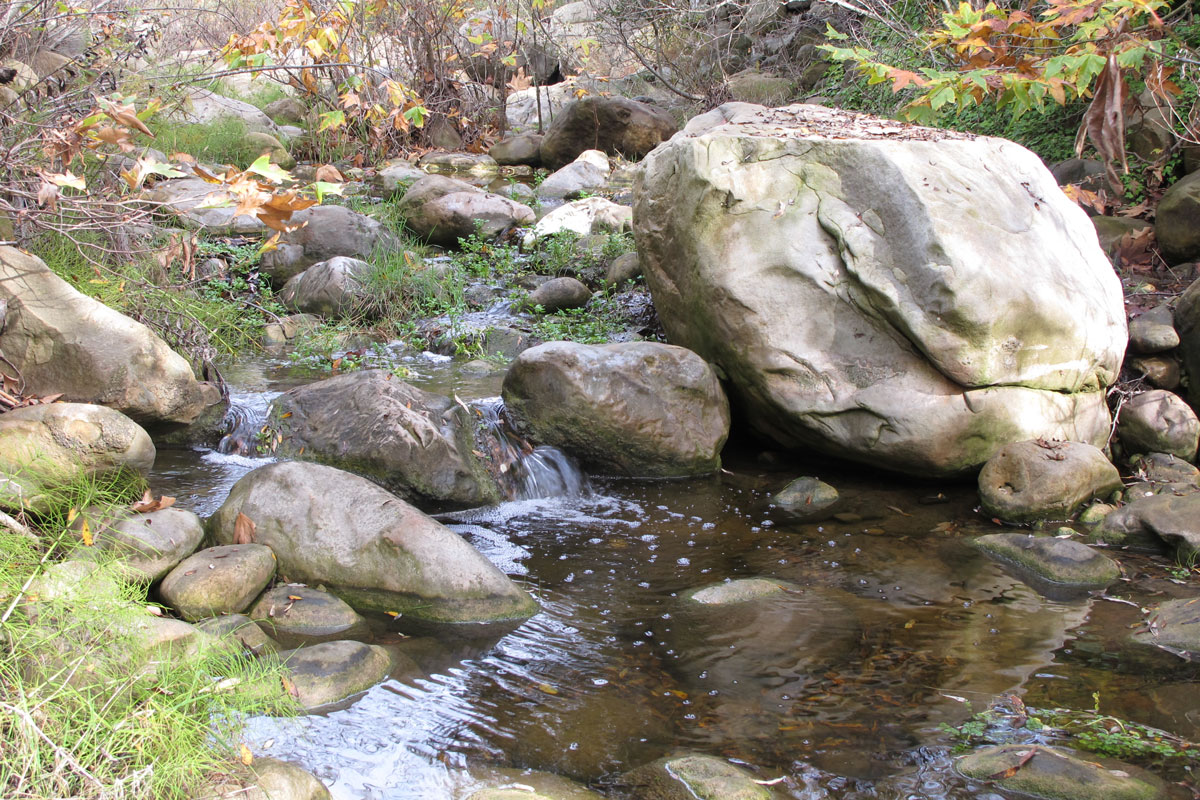Balance Hydrologics was retained to prepare a complete set of construction documents for the mitigation and restoration of Upper Penitencia Creek at the future site of the Berryessa BART station and campus. Mitigation and restoration design is needed to offset impacts related to extension of BART to San Jose. The project offers a unique opportunity to enhance this urban stream, given the existing corridor resources and narrow width. The restored channel designs recognize that the stream is part of a distal alluvial fan, and incorporate dual (‘alternate’) channels which can be occupied under a range of sediment and flow conditions. These include designing for a maximum width ranging from 100 to 150 feet, plus several floodplain wetlands, and an expansive floodplain to accommodate sedimentation cycles typical of fans. To enhance local steelhead habitat conditions, the points of confluence between the lower and upper stage channels have been designed to provide refuge for migrating steelhead including large wood elements.
The preferred alternative was verified by developing a two-dimensional hydraulic and sediment transport model using CCHE2D along with a one-dimensional hydraulic companion model developed using HEC-GeoRAS and HEC-RAS sediment transport functions. Based on the models’ predicted areas of high velocities and shear stresses, Balance has outlined extensive use of large wood at meander bends to provide bank stability and promote habitat development.
Construction documents for the preferred alternative were integrated with criteria developed for the ongoing Upper Penitencia Creek flood control project, and with frequent consultation and review by Santa Clara Valley Water District engineering and ecological staff. Construction took place in the Fall of 2012, Balance Hydrologics provided construction observation, including field fitting of large wood.
During the exceptional rainy season of Water Year 2017, our monitoring showed that the naturalized channel and floodplain environment was fully engaged on several occasions, accommodating large influxes of sediment and streamwood that will further enhance the diversity of habitat zones at the site.
